We greatly hope that you will be thrilled with both the images and the information in this article about these 4 Magnificent French Geological Marvels. It was certainly our very great pleasure to compile the information for your enjoyment, and hopefully, edification.
To be certain, these few represent only the tiniest handful of the natural wonders to be found there. This region of the globe teems with such beauty. We do feel, however, that these choices represent a good cross-section of them. So, let the enjoyment begin!
Verdon Gorge
Verdon Gorge Facts
- Leading off this article about 4 Magnificent French Geological Wonders is a location that trule merits inclusion, the awe-inspiring site known as Verdon Gorge.
- The absolutely breathtaking canyon easily stands out from many technically similar geological features for its great beauty. That fact quickly becomes readily apparent to anyone fortunate enough to visit the stunning creation of natural forces.
- In point of fact, due to that same natural wonder, it also routinely ranks among the most splendid and beautiful of such locations in its area. Given the part of the world in which it formed however, that statement says quite a bit about its beauty.
- The magnificent work of Nature easily earns this distinction for several reasons. But, the most defining, and unforgettable, characteristic of this particular canyon remains the startlingly turquoise-blue coloring of the water that flows through the site.
- Indeed, this gorgeous color lends itself easily to poetic and artistic descriptions of the site. The hue for which the site remains best-known also serves another purpose. That’s because it represents the source of the name of this remarkable geological feature.
- Due to its stunning beauty, as well as its proximity to other popular tourist regions, this product of vast spans of time holds yet another distinction. That’s because the site has, wholly understandably, of course, become an extremely popular destination.
Verdon Gorge Physical Description
Perhaps most notably, the mesmerizing Verdon Gorge markedly separates itself from similar features around the world. This holds true due to the fact that it not only boasts great beauty, but it also represents a comparatively long example of its type of feature.
This occurs as a consequence of the fact that this magnificent site boasts an overall length that measures about 15.5 m (25 km). In places, furthermore, the gorgeous canyon also displays an incredibly impressive maximum depth, measured at roughly 2,300 ft (700 m).
Its own geological structure additionally aids in the coloring of the water that flows through it, though. That’s because the walls along its length primarily consist of the relatively soft mineral limestone. The slow erosion of these serves to enhance the natural color.
Yet not all of the natural wonders of the truly breathtaking Verdon Gorge originate within its boundaries, however. That’s because the gorgeous river which flows through the location originates high in the Trois Eveches mountain range, itself a remarkably beautiful site.
Also, the magnificent work of Nature holds yet another attraction for visitors. At its end, this remarkable example of the beauty of Nature flows into a man-made lake. This addition to the work of Nature sits near the French community of Sainte-Croix-du-Verdon.
Verdon Gorge Formation, History, and Uses
This stunning marvel of Nature formed in a region of the globe already well known for its vast array of natural marvels. That’s due to the fact that this marvelous product of natural processes formed in what now constitutes the beautiful country of France, in Europe.
The truly magnificent canyon further began its formation long ago, long before mankind came onto the scene to remark on it. That holds true due to the fact that evidence indicates it formed more than 200 million years ago, during the earth’s Triassic Period.
Quite unfortunately, it also remains unclear when mankind first discovered the wondrous site. However, the first recorded mention of the beautiful gorge occurred in the year 1782. Further, by the mid-1800’s it featured prominently in tour guides of the day.
This remarkable gorge also currently aids mankind in ways other than pleasing the eye. The location now serves as a source of renewable electric power for the region. An amazing total of 5 hydroelectric dams have been constructed in various parts of the gorge.
In addition, the stunning natural gorge understandably now represents an extremely popular destination, for both local tourists and non-locals alike. Many people also readily come for such activities as hiking along its banks and kayaking its gorgeous length.
To no great surprise, though, the nature of the awesome canyon also presents one more feature to attract visitors. Each year, vast numbers of rock-climbers are drawn to the more than 1,500 routes the astounding walls of the Verdon Gorge offer to the adventurous.
Dune du Pilat
Dune du Pilat Facts
- Next up among our choices to appear in this article about 4 Magnificent French Geological Marvels comes the site that surprises many, the Dune du Pilat.
- This marvelous work of natural processes most frequently goes by this distinctive name due to the language of the region it appears in. In that same language, it also sometimes goes by the alternate, though quite similar, name of Grande Dune du Pilat.
- The english name for the remarkable feature, though, remains extremely similar, with only a slight difference. That’s due to a grammatical similarity in the two languages. The name for the feature in that language, therefore, lists as the Dune of Pilat.
- Regardless of the name used to refer to it, however, it’s a fascinating product of time and natural processes. It’s also, understandably, long intrigued the local population of the region. Precisely when local inhabitants discovered it remains unknown, though.
- Archaeological evidence indicates, though, that humans visited and made use of the site at least as far back in time as the Bronze Age. That’s because artifacts dating back to roughly 800 BC have been discovered in the sands at the approximate base of the dune.
- The gorgeous Dune du Pilat now constitutes an extremely popular tourist destination in the region. More precisely, more than 1 million tourists per year visit the amazing site, on average. That places it among the most visited in the entire country it formed in.
- That popularity, however, understandably endangers the stability of the formation. Fortunately, though, the local government undertook steps to provide it with at least a measure of protection. In 1994, the formation became a formally protected region.
Dune du Pilat Physical Description
As can easily and clearly be seen, the sheer size of the formation represents the most impressive characteristic of the breathtaking Dune du Pilat. Indeed, it boasts some world-class measurements. These, however, only serve to augment its beauty and grandeur.
It bears mentioning and remembering, though, that, due to its very nature, the dimensions of the formation change routinely change. Fortunately for those of us who appreciate its natural beauty, such changes typically amount to no more than minor alterations.
Its overall measurements typically remain essentially unchanged over time. The astonishing dune extends along the coastline for a distance of approximately 1.67 mi (2.7 km). From east to west, though, its average width measures roughly an impressive 1,640 ft (500 m).
Combined with its average depth, these already incredible dimensions further provide it with an astounding total average volume. In point of fact, the formation boasts an average total volume of roughly 2,118,880,003 cubic feet (60,000,000 cubic meters)!
The mind-blowing beauty of the Dune du Pilat also contains yet another eye-catching measurement. That’s due to the equally impressive height it attains. That’s due to the fact that, at its heighest point, the formation attains a height of roughly 349.7 ft (106.6 m).
Dune du Pilat Location, Formation, and History
The remarkable formation named the Dune du Pilat formed in a region of the world already well known for its bountiful natural splendor. That’s because it formed in a portion of the continent of Europe. Every continent has its wonders, and Europe’s no exception.
This specific feature, though, formed in the beautiful country of France, in the western portion of the continent. There, furthermore, it appears in the La Teste-de-Buch commune. This, in turn, lies in the Arachon Bay region, roughly 37.3 mi (60 km) from Bordeaux.
Precisely how long it took for the dune to reach its current size presently remains undetermined by scientists. Research does indicate, however, that it’s formation began approximately 4,000 years ago. In geological terms, therefore, it’s actually a young structure.
The intriguing site formed due to the actions of the strong, prevalent Atlantic winds. These actually eroded sand from the seaward side, only to deposit them on the landward side. This further has the effect of the dune inexorably moving inland over spans of time.
This action slowly but surely buried the leading edge of the relatively dense pine forest just inland. That action, in fact, also continues to this very day. In the process, even maps of the local area have had to be redone several times in recent centuries, beginning in 1708.
In the distant past, furthermore, the Dune du Pilat served as the site of several protohistoric camps. These, evidence indicates, dealt with the mining of sea salt. It’s also possible that actions connected to these efforts further accelerated the growth of the stunning site.
Padirac Cave
Padirac Cave Facts
- Placing third on this list of these 4 Magnificent French Geological Marvels, the site known as Padirac Cave does so only due to random selection.
- The english name for this breathtaking work of Nature is the one applied herein. In the language of its region, however, it’s called gouffre de Padirac. In any human language, though, it remains a marvel of geology little-known outside of its immediate region.
- It’s presently unkown if prehistoric man knew of the marvel of natural proceses. The first known mentioning of the incredible site, however, occurred in the 3rd century. The first known habitation of the cave by humans took place during the 15th century.
- Likewise, the first recorded visitation of the location for the purpose of tourism took place on November 1, 1898. Following the success of that visit, the government of the country it lies in officially opened it for ongoing tourist visits on April 10, 1899.
- These actions began with the first known exploration of Padirac Cave in 1889, by Édouard-Alfred Martel, considered the father of modern speleology. Credit for opening it to the public, however, usually goes to Guy de Lavaur, who arrived there in 1938.
- The current method of access, visible here, came into existence in the 1930’s. Once in the marvelous cave, visitors can tour the site either on foot or by boat. For the moment, though, only about 5% of the many amazing galleries present are open to the public.
- Presently, this marvelous site represents the most frequently visited underground site in the country in which it formed. An average of 350,000 people visit it each year. The highest recorded yearly count, however, reached 460,000 in the year 1991.
Padirac Cave Physical Description
Though the wondrous Padirac Cave hasn’t garnered worldwide fame, that’s no reflection on the natural wonders to be found within its confines. That’s because, fame or no, it holds some of the most spectacular sights to be found in any such location on earth.
Those sights also take several different forms, as one quickly learns when visiting the site. Those discoveries begin with the opening one uses to access the cave. A highly circular opening in the surface of the earth exposes a truly visually impressive chasm.
This feature of the site further measures a respectable 338 ft (103m ) deep. Its diameter, meanwhile, measures an equally impressive 108 ft (33 m). The large circular opening further amazes visitors due to what greets them on its mainly limestone walls.
That’s because a verdant green mixture of plants and moss also line the sides of that chasm. At the bottom of that opening, visitors access several chambers, each with wonders of is own. These further lead to other chambers, many of which still remain unexplored.
A small underwater river still remains in Padirac Cave, allowing the boat access. A stunning collection of stalagmites and stalactites also staggers the mind, especially with their brilliant hues. Other forms of speleothems further appear throughout the beautiful cave.
Padirac Cave Location, Formation, and Geology
The visually stunning Padirac Cave formed in region of the globe already renowned for possessing many locations of great natural splendor. That’s due to the fact that this marvelous example of the works of geological processes formed on the continent of Europe.
More precisely, the site sits in what now constitutes the country of France, in the roughly southwestern portion of the continent. In France itself, the cave lies in the Lot department, in the Occitanie region. That puts it in the deep southern part of the country.
The formation of this marvel began with the depositing of the mineral limestone in the region. This action occurred during the Jurassic Period, around 170 million years ago. Tropical lagoons covered the area at that time, thereby depositing marine sediments.
That eventually turned into the limestone of the region. As water subsequently began flowing through this area, it began the carving out of the gorgeous chambers. Evidence further indicates that this process began somewhere between 1 – 2 million years ago.
The timeline for the breathtaking opening into Padirac Cave, however, remains a matter of debate. The leading theory, however, indicates that natural processes slowly dissolved the limestone of the roof. As the cave expanded, the roof eventually collapsed.
Among the many awe-inspiring features of the cave is a massive stalactite, named the Great Pendant. Its tip very nearly touches the flowing water. Perhaps the most impressive feature of the system, however, is a relatively massive cavern, named the Grand Dome.
Gorges du Tarn
Gorges du Tarn Facts
- Closing out this compendium of 4 Magnificent French Geological Marvels is the mesmerizing beauty that goes by the name of the Gorges du Tarn.
- The deceptively simple sounding term for the site names a breathtaking canyon situated in a beautiful section of the Northern Hemisphere. This magnificent region of the world also stands out from similar areas for a fascinating and remarkable reason.
- That’s because it constitutes a unique location formed by an unusual combination of two separate geological forces. Due its unique positioning, this picturesque site further typically maintains a much milder climate than the rest of the surrounding region.
- This is accurate due to the fact that the beautiful area boasts a much milder winter seasons than the rest of the area. Additionally, the summers in the area tend to be somewhat warmer than those of the surrounding regions. This only adds to its appeal.
- Due to these generally comfortable conditions, the area comprising the Gorges du Tarn remains quite popular as a tourist destination. Yet, its popularity doesn’t end there. In fact, tourists and locals alike frequently enjoy numerous outdoor activities in the area.
- These include such activities as kayaking, hiking, spelunking, and rock climbing. But the region also boasts yet another incredible attraction to many, only adding to its already ample charm. A multitude of castles, many from the Middle Ages, also draw many.
Gorges du Tarn Physical Description
Perhaps most notably, the gorgeous geographical feature known as the Gorges du Tarn has some truly impressive physical characteristics. That’s not simply our own personal opinion, however. This somewhat bold statement holds fully true for several reasons.
Firstly, the truly magnificent site possesses a total length measuring roughly 33 mi (53 km). Secondly, the marvelous location further has a depth that varies only moderately over its entire length. That’s because its depth ranges from 1,312 – 1,669 ft (400 – 600 m).
The stunning beauty of the Gorges du Tarn further originated with the actions of the Tarn River, itself a wonderful work of Nature. Having its source on Mount Lozere, this strongly flowing water source eventually carved out the winding path of the picturesque canyon.
Although the exact age of the site remains undetermined, estimates of its age exist. Currently, those estimates place the origin of the site in the Quaternary Period, about 2.5 million years ago. Regardless of age, though, its natural beauty constantly amazes.
Gorges du Tarn Location, Formation, and Wildlife
Perhaps not surprisingly for some, the breathtaking Gorges du Tarn formed in a region of the world already well known for its great natural beauty. That’s due to the fact that the region of the globe in which this geological wonder formed consists of the continent of Europe.
More precisely still, the magical canyon formed in the amazing area that now constitutes the country of France. Further situated in the southern portion of the country, it also happens to lie within the borders of what’s now the departments of Lozère and Aveyron.
It also bears noting that the region in which this beautiful wonder of Nature formed predominantly consists of a very pliable mineral. That’s the relatively soft sedimentary rock limestone. This formed during the Mesozoic Era, between 252 – 66 million years ago.
The comparatively soft nature of the limestone enhanced the erosive effects of the water flowing through the site, accelerating its formation. However, the region also experienced a period volcanic activity, further affecting the nature of the surrounding landscape.
The stunning beauty of the lovely Gorges du Tarn is further augmented by the marvelous flora and fauna so prevalent to the area. Added to the various plant life common to the area, however, numerous cave-dweling species also inhabit the breathtaking site.
These intriguing endemic creatures include two species of small molluscs. Several types of bats also dwell in the caves located in the gorge. Astonishingly, though, several species of vultures even inhabit the region, as well as the recently reintroduced European Beaver.
4 Magnificent French Geological Marvels
We sincerely hope that you have thoroughly enjoyed reading, and hopefully learning from, this article about these 4 Magnificent French Geological Marvels. It’s also our fervent hope that having done so left you with a new or renewed appreciation of all such wonders.
Sadly, though, many of the natural wonders found throughout our world now find themselves facing uncertain futures. That occurs for many reasons, but usually due to the actions of man. It’s up to us to protect and preserve all such creations of Nature.
Check out our other articles on 4 Wondrous Asian Waterfalls, Earth’s Countless Amazing Amphibians, 5 Amazing Andean Species, Earth’s Many Magical Moths
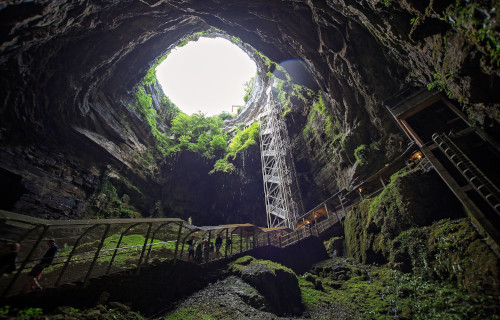
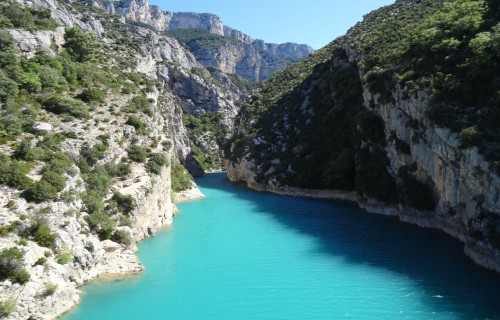
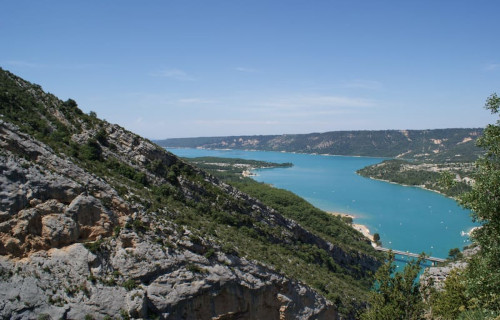
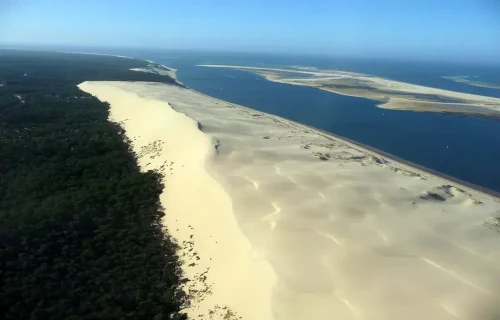
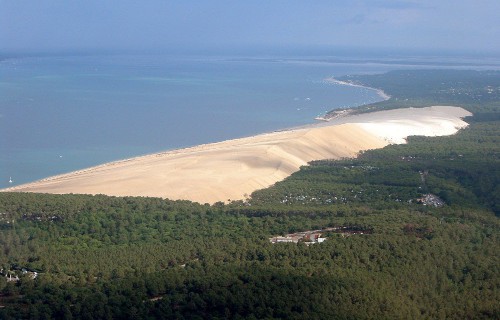
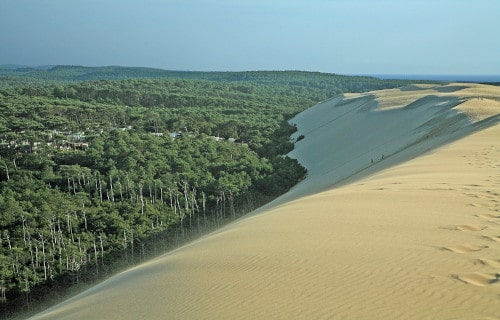
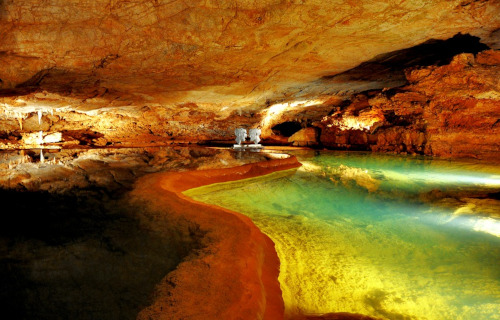
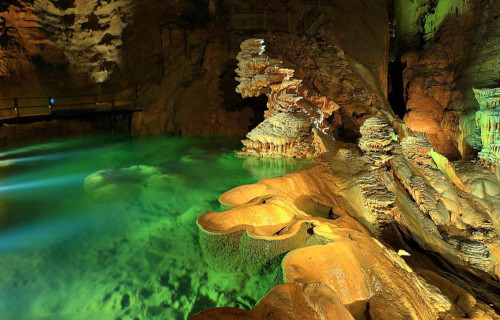
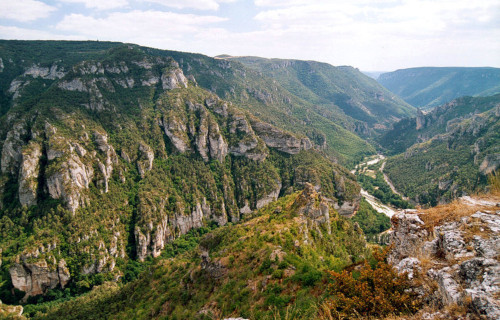
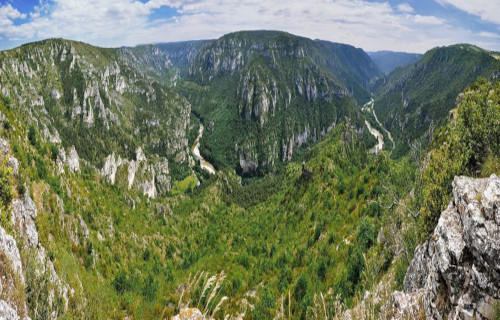
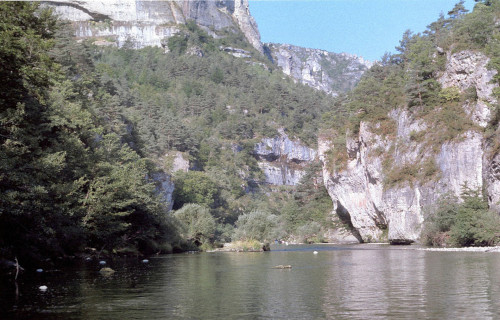









Leave a Reply